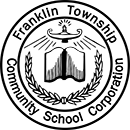How are the menus planned?
Menus are planned to provide students an opportunity to select nutritious foods that they will both enjoy eating and contribute to good health. Multiple choices are offered in every school setting. In addition, the number of choices increases as students advance from elementary to intermediate, from intermediate to the middle school, and from the middle school to the high school. Standardized recipes are utilized to ensure that all customers receive appetizing, high quality foods prepared in a safe and sanitary environment.
Are school meals healthy?
Yes! Meals are planned to meet the Dietary Guidelines for key nutrients and calories for growing children. All entrees are oven-baked, not deep fried. Fresh fruits and fresh vegetables are available daily in every school. The Government Accounting Office (GAO) reports that “children who eat school meals consume more fruits, vegetables, whole grains and dairy items than children who do not eat school meals.”
How does the department assure safe meals are served to students? Serving safe food is a critical responsibility for any school food service department and is a key aspect of a healthy school environment. Before working in any of our cafeterias, potential employees are required to take a new hire sanitation class with successful completion of a quiz used to confirm understanding of training topics. The food service department adheres to a food safety program based on Hazard Analysis and Critical Control Point (HACCP) principles. HACCP is a systematic approach designed to reduce the risk of foodborne hazards by focusing on each step of the food preparation process from receiving to storage. Standard Operating Procedures (or SOP’s) developed by the National Food Service Management Institute are used to make this approach successful. All cafeteria managers are required to provide monthly HACCP training based on these SOP’s. In addition, all cafeteria managers and production leads are required to attend ServSafe Training and to become certified. This certification is both nationally recognized and accredited by the American National Standards Institute (ANSI) and Conference for Food Protection (CFP).
Can schools serve anything they want?
Franklin Township participates in the government National School Breakfast and School Lunch Programs. A basic combo meal provides the following items:
| Breakfast | Lunch |
| 1 breakfast entree | 1 lunch entree |
| up to 2 fruit options | up to 2 fruit options and/or 2 vegetable options |
| 1 milk | 1 milk |
Breakfast is designed to supply approximately 1/4 of the vitamins, minerals, protein, carbohydrates and fat needed daily by the body. Lunch is designed to supply approximately 1/3 of the same nutrients. The daily nutritional value of the meals are based on an average for a 5 day week.
How are portion sizes determined?
The government regulates the minimum servings sizes of the basic combo meal. Serving sizes are adjusted to meet the nutritional needs of students according to age. Meal prices are calculated based on the recommended serving sizes. If we were to serve larger portions, food costs would increase and result in higher prices.
What are commodities, and are these items of good quality?
Commodities are food items that are allocated by the USDA and ordered by schools depending upon availability. Commodities must meet high quality specifications as do all of our food purchases. Commodities are offered at a reduced cost. This allows the department to keep food costs down and, therefore, keep meal prices reasonable. Commodities are allocated by the State and sent to select manufacturers for processing. Star Express uses such recognizable companies as Tyson, Pilgrim’s Pride, Land O’ Lakes and Smucker’s. Additional food items are purchased through recognized leaders in the food service industry.
How is the food service department funded?
The school food service budget is a delicate balance between income and expenditures. The program is funded by breakfast and lunch monies and federal reimbursement. These funds must s-t-r-e-t-c-h to cover ever escalating food costs, repairs, replacement and purchase of equipment, indirect cost payment to the district, salary and benefits, supplies, laundry, and training of staff. The food service program does not receive money from the general budget.
Why purchase a school meal?
- Nutritious meals reflect the Dietary Guidelines.
- Food is safe and sanitary.
- Cost is less than bringing an equally nutritious meal from home.
- Several choices are available daily.
How are meal payments made?
The food service department uses a computerized meal payment program. Students are issued a personal meal account with a corresponding keypad number. Staff is encouraged to have a meal account which can be established with the food service manager in each school. Students or staff may make prepayment for meals by the week, month, or longer through the Child Nutrition Manager in each school. Payment for meals is accepted by check or cash. Prepayment is encouraged as this expedites the service to the student through the serving line, allowing more time to eat, and reduces the need for daily cash handling. Also, payments may be made through EZSchoolPay. Parents may access their student(s) account by going to www.ezschoolpay.com
Can students receive food and beverages from meal delivery services?
No. Students cannot receive food or beverage deliveries from delivery services or outside sources.
Why is pricing different for an adult purchasing a meal?
The food service program receives varying amounts of reimbursement for each student meal it serves; however, no funds are received for adult meals. As a result, an adult is charged a la carte pricing which reflects the actual cost of the meal.
What is STAR Express
The STAR Express logo was developed by the Franklin Township food service department to promote quality meals, reasonable prices, healthy choices and customer satisfaction for both students and staff.
Nondiscrimination Statement: This institution is an equal opportunity provider.

